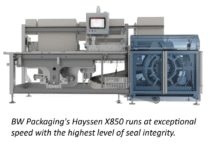
FMCG companies and packaging manufacturers are awaiting clarity from the government after the Indian Supreme Court questioned the central government’s ability to develop guidelines on labeling ingredients on the front of packaged products.
As per reports in the financial press, a meeting involving industry executives will be held on 11 April 2025, in hopes of finding an efficient way forward. The new labeling norms in India, implemented by the Food Safety and Standards Authority of India (FSSAI), mandate that critical nutritional information, such as total sugar, salt, and saturated fat, be displayed in bold, larger fonts on packaged food labels.
This change aims to help consumers make healthier food choices by highlighting these key nutrients. Additionally, labels must include information on the percentage of daily intake (RDAs) contributed by each serving of these nutrients, also in bold print.
The Supreme Court has directed the Union government to ensure that food products properly display nutritional information on their packaging, giving it three months to finalize the amendments to the Food Safety and Standards (Labelling and Display) Regulations, 2020.
The Union government told the SC that it was already in the process of introducing regulations to that effect. FSSAI joint director Permual Karthikeyan has taken action towards implementing ‘front-of-pack labeling’ (FoPL) requirements, including developing the Indian Nutrition Rating (INR) system.
The center has shared an affidavit submitted by the FSSAI that states the regulatory body had received around 14,000 comments from the public on the proposed new labeling rules. Based on these inputs the authority has decided to go ahead with the amendments to the 2020 regulations.
This is not the first time that FMCG companies have faced government mandated changes in recent times. In April 2024, the government asked all eCommerce companies to remove drinks and beverages, including Bournvita, from the health drinks category from their portals. Earlier, FSSAI directed all eCommerce FBOs to ensure appropriate categorization of food products. It noted instances of food products licensed under ‘proprietary food’ with the nearest categories of ‘dairy-based beverage mix’ or ‘cereal-based beverage mix’ or ‘malt-based beverage’ being sold on eCommerce websites under the ‘health drink’ or ‘energy drink’ categories.
In August 2024, FSSAI asked food business operators (FBOs) to remove claims of ‘A1’ and ‘A2’ types of milk and milk products such as ghee, and milk from packaging. A1 and A2 differentiation of milk is essentially linked to the difference in structure of the protein (beta-casein). Hence, the use of any A2 claims on milk fat products is considered misleading and not in conformance with the provisions laid down under the FSSAI Act and Regulations.
IndiFoodBev — authentic, impactful and influential
An English-language food and beverage processing and packaging industry B2B platform in print and web, IndiFoodBev is in its third year of publication. It is said that the Indian food and beverage industries represent approximately US$ 900 billion in revenues which implies more than 20% of the country’s GDP. Eliminating the wastage on the farmside can help to deliver more protein to a higher number of the population apart from generating sizable exports. The savings in soil, seeds, water, fertilizer, energy and ultimately food and nutrition could be the most immense contribution that country is poised to make to the moderation of climate change.
To improve your marketing and grow sales to the food and beverage processing and packaging industry, talk to us. Our research and consulting company IppStar [www.ippstar.org] can assess your potential and addressable markets in light of the competition. We can discuss marketing, communication, and sales strategies for market entry and growth.
Suppliers and service providers with a strategy and budget for targeted marketing can discuss using our hybrid print, web, video, and social media channels to create brand recognition linked to market relevance. Our technical writers are ready to meet you and your customers for content.
The second largest producer of fruit and vegetables in the world is continuously expanding processing capacities and delivery systems with appropriate innovative technologies. We cover product and consumer trends, nutrition, processing, research, equipment and packaging from farm to thali. Get our 2025 media kit and recalibrate your role in this dynamic market. Enhance your visibility and relevance to existing markets and turn potential customers into conversations. Ask for a sample copy of our bi-monthly in print or our weekly IndiFoodBev eZine each Wednesday.
For editorial info@ippgroup.in — for advertisement ads1@ippgroup.in and for subscriptions subscription@ippgroup.in
Naresh Khanna – 10 February 2025
Subscribe Now











